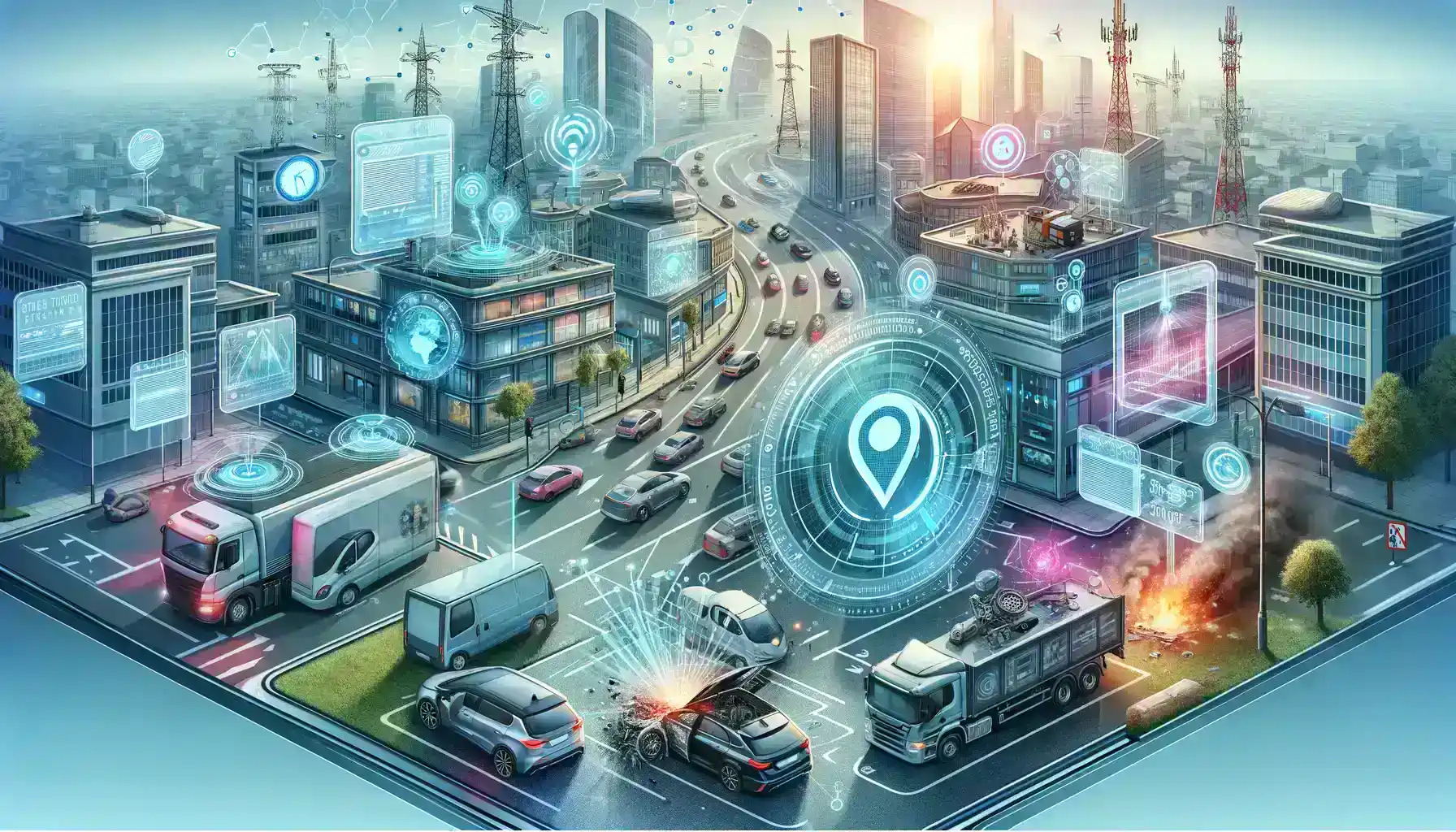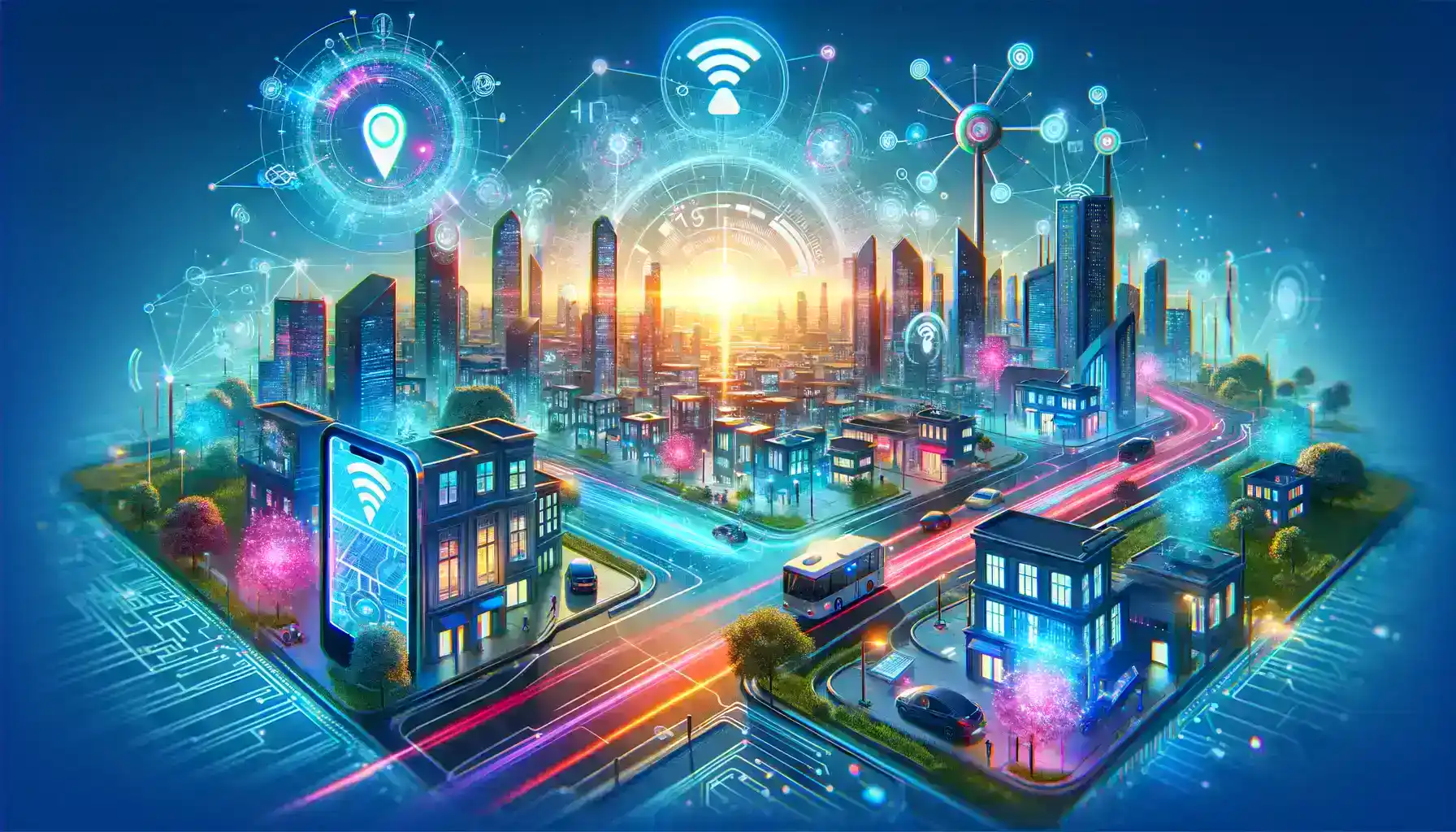Table of Contents
The intersection of precise location tracking and the Internet of Things (IoT) in 2024 has ushered in a new era of technological advancement. This article delves into how IoT has revolutionized precise location tracking, offering unprecedented accuracy and efficiency in various applications.
The Internet of Things (IoT) is increasingly utilized for asset tracking, playing a pivotal role in location-based applications. As technology advances, smaller and more affordable IoT devices enable tracking a wider array of items like containers, pallets, and equipment. These trackers are power-efficient and face minimal processing limitations.

Enterprises seeking to implement IoT-based asset tracking must first identify their specific needs. They can then choose from various wireless connectivity options such as cellular, Low Power Wide-Area Network (LPWAN), and Bluetooth (BLE), depending on the application. For pinpointing precise locations, modern Location Based Services (LBS) are the preferred choice.
Precise Location Tracking and IoT
Precise Location Tracking, an essential aspect of modern technology, has been significantly enhanced by IoT. In 2024, IoT devices equipped with sensors and connected to the internet provide real-time, precise location data. This integration allows for dynamic tracking of objects and individuals, leading to improved operational efficiency and safety measures.
Data, particularly location data, is a critical asset in IoT technologies across various industries. This data, typically latitude and longitude coordinates, is used differently in each sector.
In supply chain management, tracking assets globally enhances efficiency and workflow. The automotive industry utilizes IoT for tracking vehicles from manufacturing to on-road use, improving features like navigation with location-based weather updates and distance calculations.
Healthcare leverages location data in wearable devices for monitoring patients, especially in elderly care, enhancing safety and treatment management. In fitness, trainers and dieticians use location tracking in health bands and wearable cameras to monitor calorie consumption and expenditure. This summary outlines the diverse applications of location data in IoT across multiple sectors.
The Contextual Analysis of Location
The advancement in IoT has enabled a more nuanced understanding of location data. Contextual analysis involves interpreting location information concerning the environment and user behavior. In 2024, IoT devices not only provide the ‘where’ but also the ‘why’ and ‘how’ of movement patterns, offering deeper insights into location-based data.
The real value of IoT in location-based tracking lies in the context of the location data, crucial for achieving specific outcomes in various industries. This might include understanding local weather conditions or finding nearby amenities.
Location platforms enable contextual analysis of this data, enhancing business agility and scalability by offering access to diverse location data and algorithms. This approach also helps maintain cost-effectiveness through build-once solutions.
For example, rerouting a smart car due to a missed detour requires different handling from an IoT developer’s perspective. Instead of manually recalculating each time, the developer leverages location data and algorithms to find a new route, a process simplified by real-time Location Based Services (LBS). This scenario illustrates the practical application and efficiency of IoT in dynamic, context-sensitive situations.
Most Widely Used LBS-IoT Combinations
Several Location-Based Services (LBS) and IoT combinations have become prevalent in 2024. For instance, GPS-enabled IoT devices are widely used in logistics for real-time tracking of shipments. Beacon technology in retail environments provides customer-specific information based on their in-store location. These combinations illustrate the versatility and efficiency of IoT in precise location tracking.

Here are some of the widely implemented LBS alternatives:
Global Positioning System (GPS):
IoT and GPS together offer a comprehensive solution for vehicle management, especially in emergencies. IoT delivers real-time data on a vehicle’s condition, such as in a crash or breakdown. In contrast, GPS provides precise location information, essential for emergency services or mechanics to locate the vehicle. This combination supplies a control center with a complete set of data.
While IoT monitors device operations, GPS, through a global satellite network, gives the exact physical coordinates. Asset trackers receive microwave signals from these satellites, and the IoT system uses trigonometry and geometry principles to triangulate the device’s position accurately, often to the nearest meter. This synergistic use of IoT and GPS exemplifies how technology can enhance vehicle tracking and safety.
Cellular Tower Triangulation:
Cellular tower triangulation is primarily used in IoT for indoor asset tracking. This method calculates a device’s distance from a cell tower using signal strength, with multiple antennae on the tower indicating the device’s direction. This technique enables precise location determination of IoT devices.
The key advantage of this method is the ability to create extensive IoT ecosystems, leveraging the widespread availability of cellular infrastructure. Cellular signals, capable of covering long distances, are ideal for location-based services. Simply equipping an IoT device with a cellular antenna and connecting it to a cell network is sufficient to start tracking. This approach highlights the practicality and ease of using cellular triangulation in IoT applications.
WiFi Access Point Triangulation:
In IoT, ‘fingerprinting’ utilizes existing WiFi infrastructure for precise location tracking. This method involves analyzing WiFi signals and packets, which are exchanged with asset tags on devices and include timestamps. Accurate location identification is enhanced when the router infrastructure is evenly and densely distributed. This approach underscores the efficiency of WiFi-based systems in IoT for detailed location tracking.
Enhancing Efficiency and Safety
The integration of IoT in location tracking has significantly enhanced operational efficiency across various industries. For example, in supply chain management, the ability to track goods with pinpoint accuracy has streamlined logistics operations, reducing costs and improving delivery times. In terms of safety, IoT-enabled location tracking has improved response times in emergency services and has enhanced security in personal tracking applications, like those used for children or elderly care.
Leveraging IoT for the Most Accurate Location Information
To achieve the highest level of accuracy, 2024’s IoT technology leverages advanced algorithms and multiple data sources. Techniques like trilateration, triangulation, and RFID tagging are used to pinpoint exact locations. The integration of AI and machine learning further enhances the precision of location tracking in IoT devices.
Integrating location-based services with IoT technologies offers optimal solutions for asset tracking and device identification. Additionally, if battery-powered trackers aren’t suitable for a supply chain workflow, IoT solutions present a viable alternative.
Future Outlook of Precise Location Tracking

Looking ahead, the future of precise location tracking in IoT is promising. Developments like ultra-accurate GPS, the integration of 5G technology, and the increasing miniaturization of IoT devices are expected to enhance location tracking further. The potential for even more precise, energy-efficient, and faster location-tracking systems is on the horizon.
The future of precise location tracking is poised for significant advancements, driven by the integration of emerging technologies and the evolving capabilities of the Internet of Things (IoT). Key trends likely to shape this future include:
Advanced IoT Integration: As IoT devices become more sophisticated and widespread, their integration with location-tracking technologies will enhance precision and functionality.
AI and Machine Learning: The application of artificial intelligence and machine learning algorithms will improve the accuracy of predictive modeling and real-time decision-making in location tracking.
Enhanced GPS Technologies: Developments in GPS technology like RTK for GPS will lead to more accurate and reliable location data, even in challenging environments.
5G Connectivity: The rollout of 5G networks will facilitate faster data transfer and real-time processing, improving the responsiveness of location tracking systems.
Indoor Positioning Systems: Advances in indoor positioning will enable precise tracking within buildings, complementing traditional GPS which is less effective indoors.
Increased Privacy and Security: As location tracking becomes more pervasive, there will be a heightened focus on privacy and security to protect sensitive data.
Cross-sector Integration: Precise location tracking will find new applications across various sectors, including healthcare, logistics, urban planning, and environmental monitoring.
Sustainability Efforts: Location tracking will play a crucial role in sustainability, helping to optimize routes for reduced emissions and monitoring environmental changes.
User-centric Services: Customized location-based services will become more prevalent, offering personalized experiences for users based on their location history and preferences.
Autonomous Vehicles and Robotics: Precise location tracking will be critical for the safe operation of autonomous vehicles and robots, particularly in complex urban environments.
These trends indicate a future where precise location tracking is integral to numerous aspects of daily life, driving innovation and efficiency across multiple domains.
Conclusion
The year 2024 marks a significant milestone in the evolution of precise location tracking, primarily due to advancements in IoT. This technology has not only increased the accuracy of location data but also expanded its applications across various sectors. As we continue to innovate and integrate, the future of IoT in precise location tracking holds endless possibilities for improving efficiency, safety, and quality of life.
As we move forward, the potential for IoT in precise location tracking continues to grow. The integration of AI and machine learning is expected to further refine the accuracy and predictive capabilities of these systems. The ongoing development of 5G networks will likely enhance the speed and reliability of data transmission, opening up new possibilities in real-time tracking applications. The future of IoT in precise location tracking, therefore, seems poised to usher in an era of unprecedented efficiency, safety, and personalization, impacting a wide array of sectors and everyday life.





